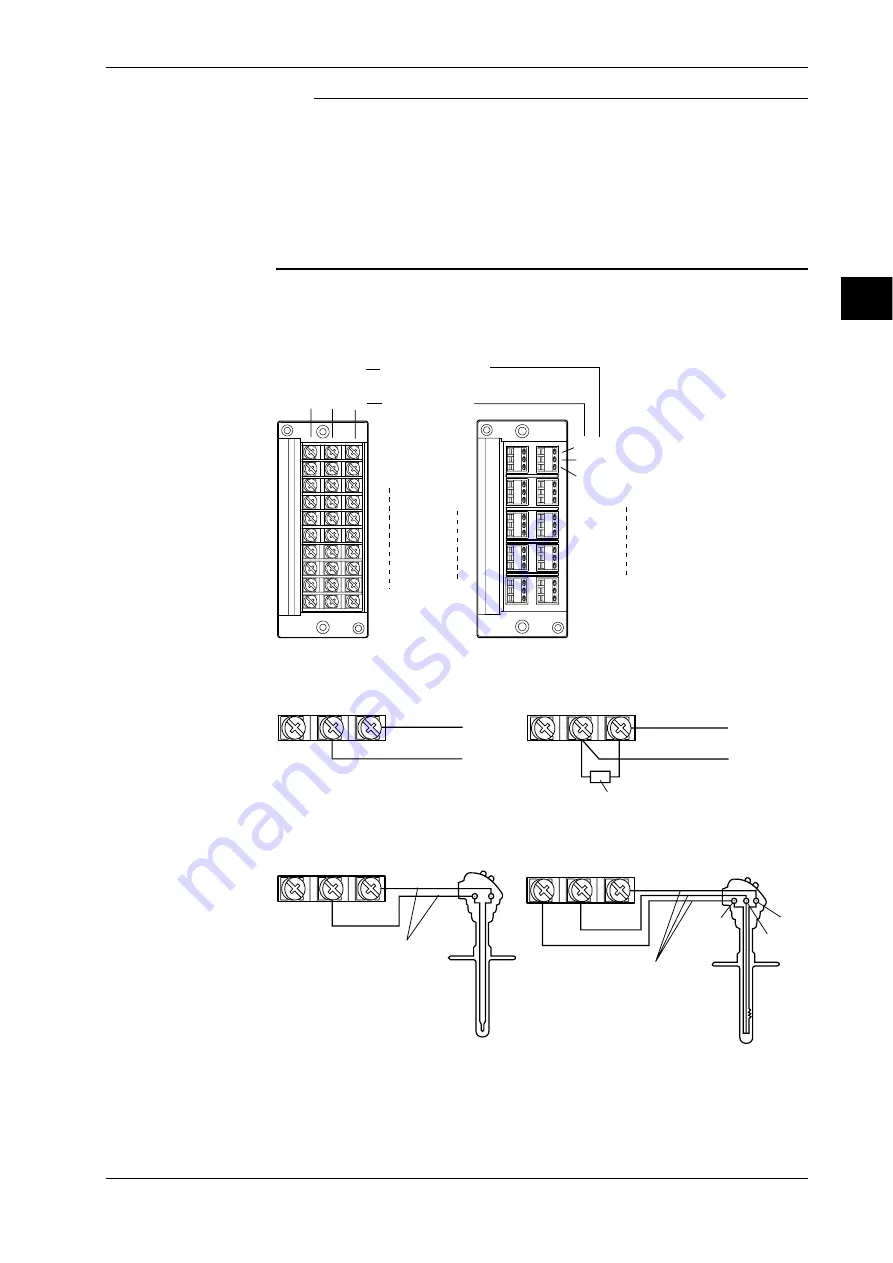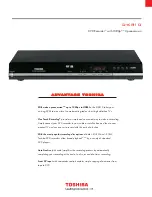
3-17
IM DR231-01E
Installation and Wiring
3
Note
Make sure that the equipment connected to the signal in-/output conforms IEC (CSA) 950 or IEC (CSA)
1010. Also, make sure to use cables that conform to IEC (CSA) standards.
In case you are using an internal RJC in case of thermocouple input, the following considerations are
necessary to stabilize the temperature at the terminals. Always make sure to re-apply the terminal cover;
The thermal capacity of the wiring should be small (cross sectional area of less than 0.5mm
2
); Minimize
outside temperature fluctuations as much as possible.
To prevent noise, make sure to ground each unit at the grounding function terminal (below the power
switch) together at one point.
Refrain from wiring the input signals parallel. However, if you do, then the following considerations are
necessary. Ground all equipment at the same point; Do not turn the power of other equipment ON/OFF
during operation; Do not use the burnout function.
Wiring Input Signal Lines (Universal and DCV/TC/DI input modules)
Terminals
Screw type terminal
Clamp type terminal
+
-
A
B
b
DC voltage • TC •
contact
RTD*
A
B
b
CH1
CH2
CH10
CH1
CH2
CH3
CH4
CH9
CH10
+
-
Measurement using
RTD‘s cannot be
made with
DCV/TC/DI modules.
Wiring Diagram
DC voltage input
Compensation lead
DC current input
Shunt resistor
Note:For 4 to 20mA input, shunt
resistance value should
be 250
Ω
±0.1%
10
Ω
* max./leadwire
Three wire resistances
should be approx. equal.
*10
Ω
max. for Pt100
Ω
and
Pt50
Ω
, 1
Ω
max. for Cu10
Ω
.
DC input
RTD input
TC input
DC voltage input/DI input (contact)
b
A
B
A
b
B
+
-
+
-
+
-
+
-
+
-
3.5 Connecting the Signal Lines
Summary of Contents for DR231
Page 12: ...10 IM DR231 01E...
















































